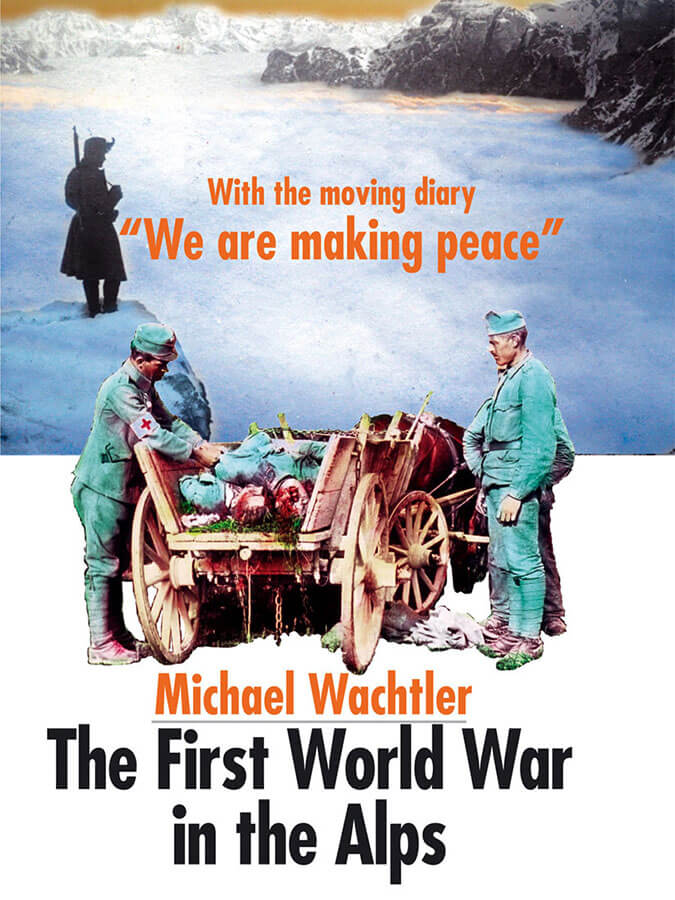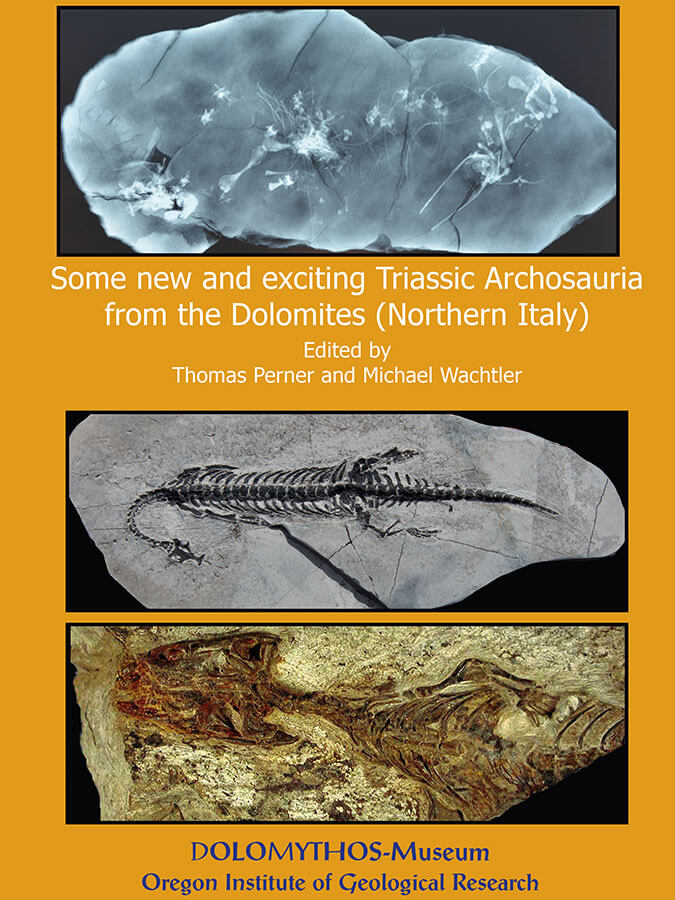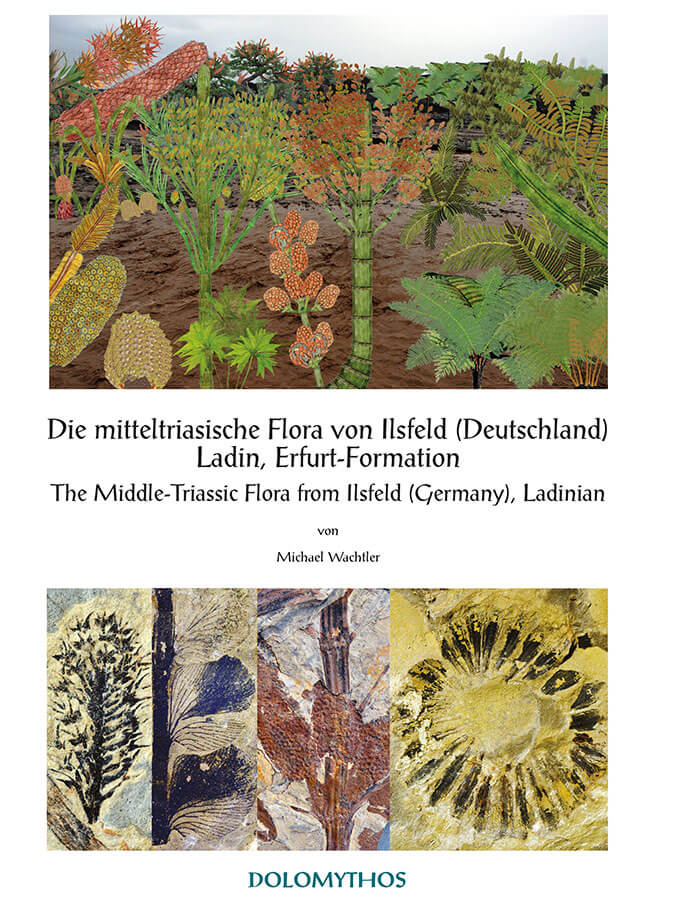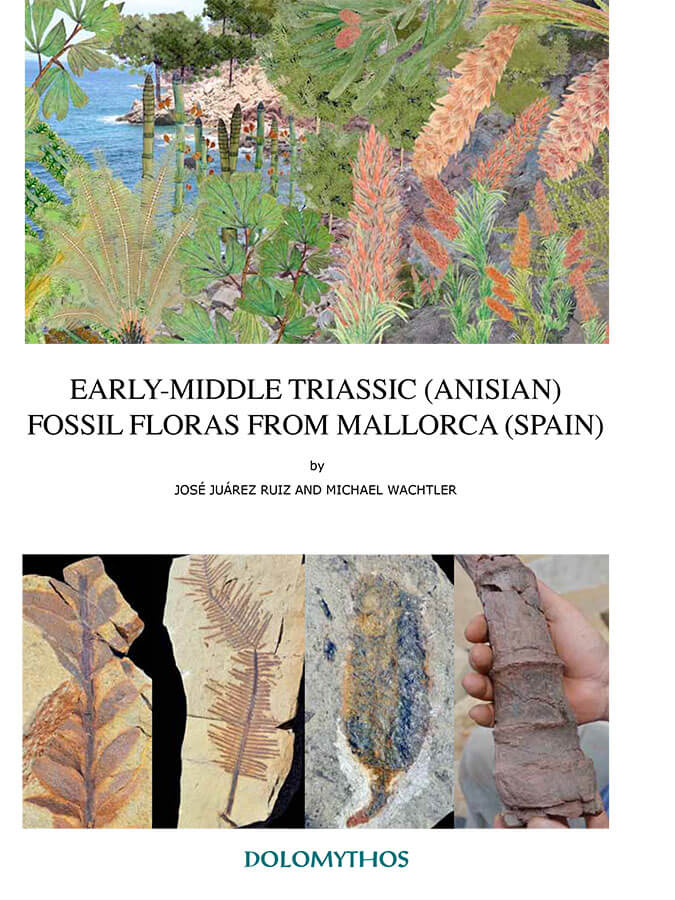
Michael Wachtler
Language: English
With the moving diary “We are making peace”
Pages 192, Over 300 photos, Publisher: Athesia Spectrum.
Euro 19,90

Michael Wachtler
Language: English
With the moving diary “We are making peace”
Pages 192, Over 300 photos, Publisher: Athesia Spectrum.
Euro 19,90

Michael Wachtler
Language: English
Preliminary researches about the Early-Middle Triassic Fossil Floras from the Dolomites.
A Compendium 224 Pages, 200 Illustrations, Editor DoloMythos
Euro 49,90

Michael Wachtler, Nicolas Wachtler
Language: English
Permo-Triassic climate catastrophes as basis for the birth of new life forms
With over 800 photos and drawings, 240 pages, Hardcover 29,7x21 cm
Euro 98,00

Thomas Perner – Michael Wachtler
Language: English
With over 300 photos and drawings
86 pages, Softcover 29,7x21 cm
Euro 49,00

Michael Wachtler, Thomas Perner
Language: English
Early Permian Flowering Plants. Based on new sensational discoveries.
With over 800 photos and drawings, 240 pages, Hardcover 29,7x21 cm
Euro 98,00

Michael Wachtler and Thomas Perner
Published by Dolomythos Museum, Innichen, South Tyrol, Italy Oregon Institute of Geological Research, Portland, OR, (USA), 2018
Euro 29,90

Michael Wachtler, Thomas Perner
Based on new sensational discoveries
Published by Dolomythos Museum, Innichen, South Tyrol, Italy Oregon Institute of Geological Research, Portland, OR, (USA), 2016
Euro 49,00

Michael Wachtler
Ladin, Erfurt-Formation
Language: English / German
Published by Dolomythos Museum, Innichen, South Tyrol, Italy, 2016,
Euro 39,00

Thomas Perner – Michael Wachtler
Published by Dolomythos Museum, Innichen, South Tyrol, Italy Oregon Institute of Geological Research, Portland, OR, (USA) January 2013
First Edition 2015
Euro 49,00

Thomas Perner – Michael Wachtler
Published by Dolomythos Museum, Innichen, South Tyrol, Italy, 2015
Euro 29,00

Thomas Perner – Michael Wachtler
Published by Dolomythos Museum, Innichen, South Tyrol, Italy, 2015
Euro 29,00
No entries found.

Michael Wachtler
Language: English
Preliminary researches about the Early-Middle Triassic Fossil Floras from the Dolomites.
A Compendium 224 Pages, 200 Illustrations, Editor DoloMythos
Euro 49,90

Michael Wachtler, Nicolas Wachtler
Language: English
Permo-Triassic climate catastrophes as basis for the birth of new life forms
With over 800 photos and drawings, 240 pages, Hardcover 29,7x21 cm
Euro 98,00

Thomas Perner – Michael Wachtler
Language: English
With over 300 photos and drawings
86 pages, Softcover 29,7x21 cm
Euro 49,00

Michael Wachtler, Thomas Perner
Language: English
Early Permian Flowering Plants. Based on new sensational discoveries.
With over 800 photos and drawings, 240 pages, Hardcover 29,7x21 cm
Euro 98,00

Michael Wachtler and Thomas Perner
Published by Dolomythos Museum, Innichen, South Tyrol, Italy Oregon Institute of Geological Research, Portland, OR, (USA), 2018
Euro 29,90

Michael Wachtler, Thomas Perner
Based on new sensational discoveries
Published by Dolomythos Museum, Innichen, South Tyrol, Italy Oregon Institute of Geological Research, Portland, OR, (USA), 2016
Euro 49,00

Michael Wachtler
Ladin, Erfurt-Formation
Language: English / German
Published by Dolomythos Museum, Innichen, South Tyrol, Italy, 2016,
Euro 39,00

Thomas Perner – Michael Wachtler
Published by Dolomythos Museum, Innichen, South Tyrol, Italy Oregon Institute of Geological Research, Portland, OR, (USA) January 2013
First Edition 2015
Euro 49,00
No entries found.
No entries found.

Michael Wachtler
Language: English
With the moving diary “We are making peace”
Pages 192, Over 300 photos, Publisher: Athesia Spectrum.
Euro 19,90
Orders to Bulgaria, Switzerland, Cyprus, Czech Republic, Denmark, Estonia, Spain, Finland, Norway, France, Great Britain, Greece, Hungary, Ireland, Lithuania, Luxembourg, Latvia, Malta, Netherlands, Poland, Portugal, Romania, Sweden, Slovenia, Slovakia: €15.00 flat rate + €1.55 per title
Orders to Germany and Austria: €8.55 flat rate + €1.55 per title
Orders to Italy: €4.00 flat rate + €1.55 per title
The customer can pay the purchase price by credit card, cheque or direct debit.
If you have any further questions about delivery and payment terms, please do not hesitate to contact us.